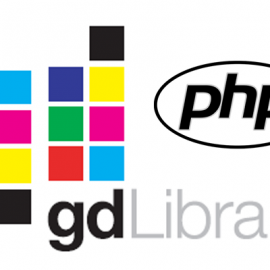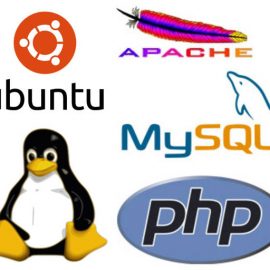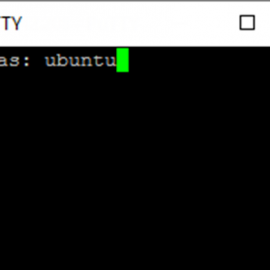In this short article, I will set up scheduled tasks known as Cron Jobs on a Ubuntu server. This will allow me to automatically run PHP scripts on the server at various points in time without any interaction. Any user account on the Ubuntu server can set up their own Cron Jobs which will run under their own account. If you want to make sure the scheduled task has full access to everything then it will need to run under a privileged account such as the “root” user and you
Hosting multiple websites on a single Apache server

In this article I will run through the setup of multiple websites on Apache on a single Ubuntu LAMP server. LAMP is a common acronym for a typical setup and stands for Linux, Apache, MySQL and PHP. I will go through step by step using FileZilla (for transferring files) and PuTTY (command line interface for configuring the server). There are example screens walking through each step showing both enabling or disabling the default Apache website and adding/enabling other websites. The process is the same for each additional domain so after
Steps to securing your Apache web server on Ubuntu

This article goes through some of the things you can do to protect your web server from certain types of attacks and to keep the disclosure of information down to a minimum. It will show you how to help prevent clickjacking, SSL cipher or mime-based attacks. It will show you how to avoid error messages and other methods giving away more information than is needed. These can mostly be prevented at a server level so that they apply to all websites that you publish on the server. A brief description
Fixing GD by replacing the version in the bundled PHP package

The GD Library in PHP allows developers to output images from code in various formats rather than output HTML mark-up for displaying web pages or snippets. It is a very popular method of creating images used on web forms where the validity of a human user needs to be attained (this method is commonly known as Captcha). However, a bundled PHP distribution might not come with GD enabled and fully functioning such as those used by the “apt-get install php5” command on Ubuntu. Even after “apt-get install php5-gd” is run
Setting up Apache, MYSQL and PHP on Ubuntu Linux (LAMP)

This article shows you the commands required to set up an Apache web server on a fresh Ubuntu Linux installation from a Command Line Interface. It goes through the steps to setup PHP and MySQL and link both to the Apache web server. It doesn’t just finish there though. I also cover installing OpenSSL for managing secure certificates, VSFTP for file transfer protocol accounts and the GD PHP image library. These are popular things to do for say running WordPress but not essential to a LAMP (Linux, Apache, MySQL and
Upgrading packages on Ubuntu from the command line

This short article goes through the commands required to upgrade to the latest trusted distribution of Ubuntu 14.04 Long Term Support (LTS) but the same commands can be used for any Ubuntu upgrade. The following example shows the commands and actions for upgrading all of the packages on Ubuntu to their latest distributed versions rather than just applying updates to currently installed packages. The first thing to do is login using your Command Line Interface (CLI). You will probably login with an account that does not have upgrade privileges. You
Secure Ubuntu connection via AWS authentication token using CLI and FTP

This is a bit of a specialist article that shows how to do something in specific circumstances rather than try to cover all eventualities but hopefully it will be useful outside of the narrow example for those that need help. In this article I set up a secure connection to a Linux server running Ubuntu 14.04.4 LTS on Amazon Web Services (AWS) with authentication through a token. The connection to the server examples is shown from both a Command Line Interface (CLI) and a File Transfer Protocol (FTP) client. I’m

